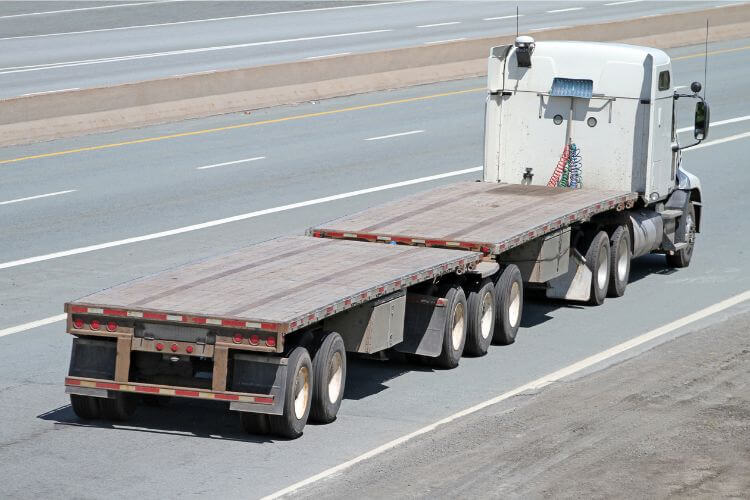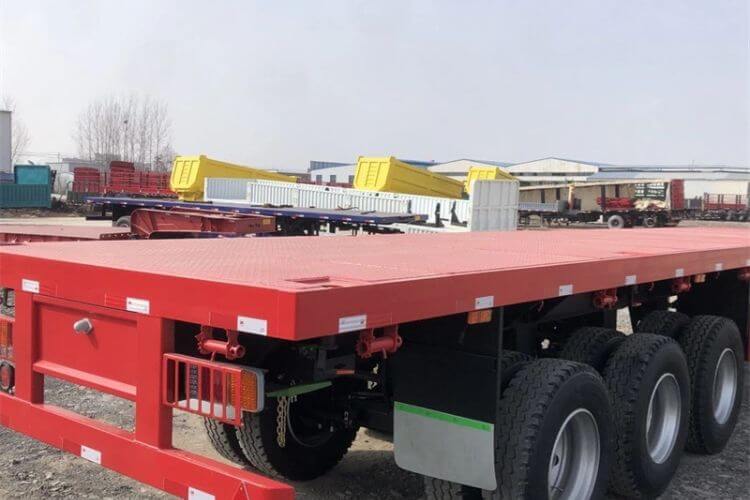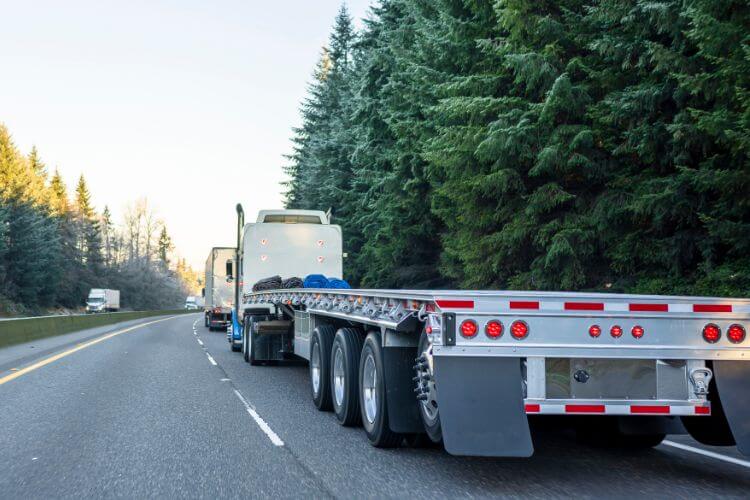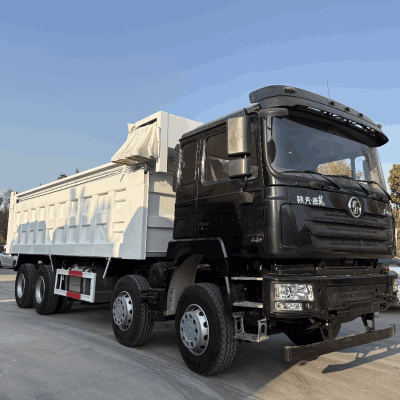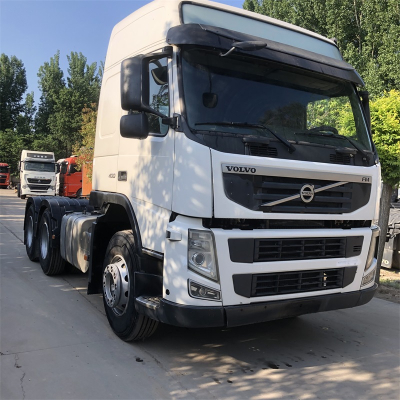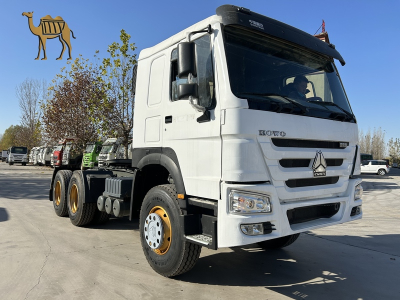How Much Does a Semi-Trailer Weigh?
Do you belong to the logistics, constructions, mining, or international freight sectors? If the answer is YES. You might have wondered at some time or the other: What is the actual weight of a semi-trailer? It might not seem, but the answer matters a lot. The tare weight of your trailer determines the amount of legal payload you can carry, your fueling costs, and even the markets or routes you can serve profitably.
The flatbed semi-trailer is considered one of the main vehicles for heavy equipment, steel coils, machinery, and containers among all kinds of trailers. Knowing its weight - unladen and loaded - is very important for safe and productive operations.
The following guide provides you with typical weights, main factors that affect them and how to select appropriate configuration for your fleet.
The Significance of Semi-Trailer Weight
Each extra kilogram (or pound) of tare weight means that one kilogram of cargo is no longer legal to be loaded. Thus, the weight of a semi-trailer is a major concern for the operators:
It has an impact on legal adherence regarding road and bridge weight limits.
It is a major factor that determines the amount of freight a truck can carry and the total income from that trip.
It also plays a role in the amount of fuel used, tire wear, and maintenance cost.
For companies that make use of open-deck trucks, the choice of a flatbed semi-trailer with the appropriate weight range can lead to either competitive pricing or the risk of continuous overloads.
Basic Terms: Tare, Payload, and Gross Weight
It’s beneficial to establish a common language before delving into figures, as it is to see in specification sheets and regulations the following key terms:
Tare Weight (Empty Weight) - This term refers to the total weight of the semi-trailer that does not include cargo, fuel, or driver.
Payload Capacity - It denotes the maximum weight of the trailer which is safe to carry as cargo.
Gross Vehicle Weight (GVW) - This consists of the combined weights of the truck, semi-trailer, fuel, driver, and cargo.
Gross Vehicle Weight Rating (GVWR) - The legal limit for GVW is set by manufacturers and authorities handling the issue.
In effect, when you purchase or specify a flatbed semi-trailer, you are weighing tare weight (a lighter weight is better for payload) against strength and durability (heavier structures are usually able to carry tougher loads).
Typical Empty Weights by Trailer Type
Actual weights depend on different factors such as country, manufacturer, material, and options, nevertheless, the following ranges are a good basis:
1. Dry Van Semi Trailers
Enclosed box design for general cargo.
Typically, empty weight: about 10,000–15,000 lb. (4.5–6.8 t).
2. Refrigerated (Reefer) Semi Trailers
Insulation + refrigeration unit together increases the weight.
Around 12,000–18,000 lb. (5.4–8.1 t) is the typical empty weight.
3. Flatbed Semi Trailers
An open deck is good for steel, machinery, containers, and oversized loads.
Depending on whether it’s steel, aluminum, or a mixed structure, a standard three-axle flatbed semi-trailer tends to weigh 10,000–16,000 lb. (4.5–7.3 t) when empty.
4. Tanker Semi Trailers
Liquids, chemicals, fuel, or food-grade cargo are the typical contents.
Typical empty weight: 10,000–20,000 lb. (4.5–9 t).
5. Specialized Semi Trailers (Lowbeds, Expendables, etc.)
For heavy machinery, wind blades, construction equipment.
Varying from 12,000 lb. to over 25,000 lb. empty weight (5.4–11+ t).
These are just rough reference ranges - various countries and OEMs will have their own specifications. In making decisions, always consider the exact data plate and technical drawings for the specific model.
How Much Does a Flatbed Semi Trailer Weigh?
We are talking about the flatbed semi-trailer, the primary subject of this discussion, in greater detail.
Typically, a long-distance freight tri-axle flatbed would weigh within the following approximate ranges:
Standard 40-45 ft flatbed semi-trailer - Empty weight: about 10,000-14,000 lb. (4.5-6.3 t).
Heavy-duty 3-4 axle flatbed semi-trailer (for construction, mining, steel) - Empty weight: about 13,000-18,000 lb. (5.9-8.2 t).
Lightweight aluminum or weight-optimized flatbed - Empty weight: at times near or even less than 10,000 lb., thus obtaining higher payload but compromising some durability.
Ultimately, the weight of a flatbed semi-trailer largely depends on its design and application. For instance, a light model meant for exports would weigh less than a rugged one built for warlike situations in Africa or Central Asia.
Important Factors Determining the Weight of Semi-Trailers
If you think about it, no matter what kind of semi-trailers you choose to use, be it dry van, tanker, or flatbed, the same design solutions will affect their respective empty weights:
1. Material of Building
Complete steel frame and floor: Very strong and relatively inexpensive but heavier at the same time.
Aluminum or a combination of steel with aluminum for the structure: Only one-third of the weight as usual, more fuel-efficient and higher payloads, but usually higher initial cost.
High-strength low-alloy (HSLA) steels: They allow manufacturers to use thinner plates for strength retention without sacrificing quality.
It is very crucial to make use of a light but strong material in case of a flatbed semi-trailer in the marketplace with strict weight norms.
2. Height and Length
Extra-long trailers not only need more material but also normally come with increased weight.
Plus, the height or the reinforced deck for the case of heavy machinery adds up the weight too.
3. Number of Axles
Having more axles means more parts for suspension, more wheels and stronger frames.
A 2-axle trailer generally has a lower weight than a 3- or 4-axle construction, however, its legal payload could be lower than that of a 3- or 4-axle trailer in some areas.
4. Added Features
The tare weight gets higher with toolboxes, spare wheel carriers, front bulkhead, container locks, stake pockets, hydraulic ramps or twist locks.
For the fleets that need flexibility, these options are worth the extra kilograms.
Legal Limits and Payload Planning
The legal limits set by most countries include:
Max weight per axle or axle group
Max gross combination weight (GCW) for truck + trailer
Max height, width, and length
In many markets, the weight of a fully loaded tractor and semi-trailer combination is restricted to about 40-49 tonnes (or up to 80,000 lb. in the U.S.) on standard configurations.
That implies:
The lighter the flatbed semi-trailer, the bigger the legal payload that can be carried without breaking the axle or gross limits.
To give an example, if there are two trailers and both have the same GCW limit, but one trailer has a tare weight that is 1,000 kg less than the other one, then there would be 1,000 kg of revenue cargo for every trip on the lighter trailer.
Selecting Suitable Flatbed Semi-Trailer Weight for Your Projects
Weight should not be the only factor to consider when you assess a flatbed semi-trailer. Consider the entire scenario:
1. Cargo Type
Heavy steel plates, h-beams, and machinery require high concentrated load capacity and a robust frame.
Containers and palletized goods may permit a lighter design.
2. Road Quality
Mine roads, desert tracks, and unpaved construction sites require frames and suspensions of heavier duty.
Highways and port-to-port routes can usually employ lighter, more fuel-efficient structures.
3. Area of Operation and Rules
Africa, the Middle East, Southeast Asia, and Latin America can have different axle-load regulations.
A flatbed semi-trailer designed for one region might need to be strengthened or have lifting of axle reconfiguration for another.
4. Total Cost of Ownership
Lighter trailers reduce fuel costs and might have a higher payload.
Heavier, reinforced trailers may have a longer lifespan in adverse conditions with fewer structural repairs.
Getting help from a manufacturer or exporter who has full understanding of your intended roads and loads is the quickest way to find the right compromise.
Day by Day Practical Tips for Managing Trailer Weights
The following practices will help you to stay safe and compliant once your trucks are on the road:
Know the tare weight of each specific semi-trailer in your fleet and make sure it is recorded.
Teach drivers how to read weight tickets and familiarize them with axle and gross limits.
Set up weighbridges or use portable scales at the most important loading points.
Create and implement loading patterns for types of cargo that are shipped repeatedly (e.g., steel coils, containers, pallets).
Carry out inspections of the frame and deck frequently, particularly on a flatbed semi-trailer that works hard and carries heavy machinery or concentrated loads.
FAQs About the Flatbed Semi-trailer Weight
1. What is the usual weight of an empty semi-trailer?
Most empty semi-trailers can be estimated to weigh between 10,000 and 25,000 lb., considering their type, length, and material of construction. The weight of a regular highway flatbed semi-trailer is generally on the lower end of the indicated range in comparison with heavy specialized lowbeds and tankers.
2. Why do flatbed trailers sometimes have higher weight than dry vans?
A flatbed semi-trailer is constructed with a robust open deck and frame, which allows it to easily support heavy loads, side loading, and heavy machinery. Consequently, it can use thicker beams, cross members, and floor material which sometimes leads to the empty weight being the same or slightly higher than that of an enclosed dry van.
3. What is the capacity of a flatbed semi-trailer?
The capacity of the flatbed trailer depends on the local regulations and the tractor that is used. In many areas, a standard flatbed semi-trailer with a three-axle truck can legally carry somewhere in the range of 25–35 t if the axle and gross weight limits are followed, considering that this limit is for the most efficient operation.
4. Is it always the case that a lighter trailer is better?
Not necessarily. A very lightweight flatbed semi-trailer may prove to be the most suitable for container and palletized freight on smooth highways, but it might not withstand the rough conditions of mining roads and heavy construction sites. The ideal choice is one that combines weight, strength, and realistic working conditions.
5. What trailer of weight-related information should I obtain from a supplier?
Request the precise tare weight, maximum payload, axle load ratings, materials used, and the various regional types of flatbed semi-trailers that they provide in your market area. Suppliers who are confident and reliable will even provide you with drawings, load-distribution diagrams, and customer case history.
Ready to Upgrade Your Fleet? Talk to Camel Truck
If you are paper comparing semi-trailers, then weight numbers might give you a hard time understanding. A trailer is not your only need. Road conditions, cargo profile, and business goals understanding partner are also necessary for you.
Camel Truck has been exporting reliable trucks and trailers that are adapted to the real working environments in Africa, the Middle East, Southeast Asia, Latin America, and other regions for many years. Our team can help you pick the right design, axle configuration, and options whether you want a standard highway flatbed semi-trailer or a heavy-duty one for mining and construction.
What Can Camel Truck Do?
Optimize tare weight without compromising on strength
Ensure that trailer specs fall within local axle-load regulations
Receive one-stop support for tractor trucks, flatbed semi-trailers, and spare parts
Want to go over the details? Get in touch with Rory from Camel Truck now to ask for a price quote or a tailored solution for your next flatbed semi-trailer purchase – and we will assist you in transporting more cargo, safer, with every trip.











